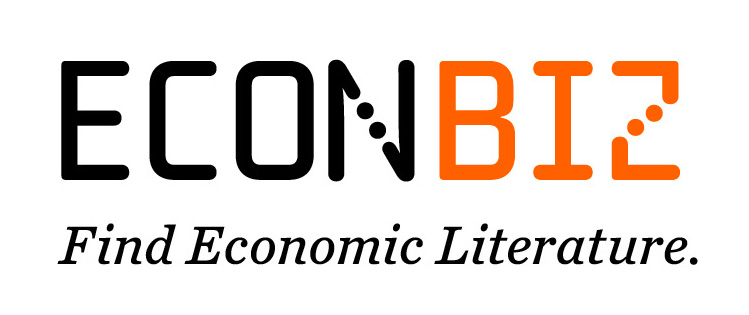| ISSN | 2615-9813 |
| ISSN (số cũ) | 1859-3682 |
Số 230 | Tháng 5/2025
Tác động của đầu tư trực tiếp nước ngoài, tài chính xanh đến phát triển bền vững tại các quốc gia trên thế giới
Cao Tấn Huy, Nguyễn Trần Xuân Linh
Tóm tắt:
Nghiên cứu này được thực hiện nhằm đánh giá tác động của nguồn vốn đầu tư trực tiếp nước ngoài (FDI) và tài chính xanh (TCX) đến phát triển bền vững tại 54 quốc gia trên thế giới giai đoạn 2008–2022. Thông qua các hồi quy dữ liệu bảng theo phương pháp Bayes, nghiên cứu này đã cung cấp các bằng chứng về tác động không mong muốn của dòng vốn FDI và nhu cầu phải cải thiện chất lượng, nâng các tiêu chí lựa chọn các dự án FDI để nâng cao chất lượng tăng trưởng kinh tế, bảo vệ môi trường và đảm bảo cuộc sống người dân. Kết quả nghiên cứu cũng khẳng định vai trò của TCX đối với sự phát triển bền vững của một quốc gia. Bên cạnh nhân tố dòng vốn FDI và TCX, nhóm nghiên cứu cũng làm rõ vai trò của các yếu tố khác đối với phát triển bền vững bao gồm thuế, chất lượng thể chế, độ mở thương mại, tăng trưởng dân số và lạm phát.
Tài liệu tham khảo:
- Abdouli, M., & Hammami, S. (2018). The dynamic links between environmental quality, foreign direct investment, and economic growth in the Middle Eastern and North African countries (MENA region). Journal of the Knowledge Economy, 9(3), 833-853. https://doi.org/10.1007/s13132-016-0369-5.
- Abidin, I. S. Z., Bakar, N. A. A., & Haseeb, M. (2015). The contextual relationship between foreign direct investment, consumption of energy, financial development, and trade: Evidence from selected ASEAN countries. Renewable and Sustainable Energy Reviews, 47, 382–390.
- Amri, F. (2016). The relationship amongst energy consumption (renewable and non-renewable), and GDP in developing countries: A panel cointegration analysis. Renewable and Sustainable Energy Reviews, 64, 695–702.
- Atkeson, A., Chari, V. V., & Kehoe, P. J. (1999). Taxing capital income: a bad idea. Federal Reserve Bank of Minneapolis Quarterly Review, 23, 3-18. https://thebigquestions.com/chari.pdf.
- Ayamba, E. C., Haibo, C., Musah, I., Ruth, A. A., & Osei-Agyemang, R. (2020). The impact of foreign direct investment on sustainable development in China. Environmental Science and Pollution Research, 27(9), 9110–9121. https://doi.org/10.1007/s11356-020-07684-1
- Barro, R. J., & Becker, G. S. (1989). Fertility choice in a model of economic growth. Econometrica: journal of the Econometric Society, 481-501. https://doi.org/10.2307/1912563.
- Bhattacharjee, J. (2017). Do institutions affect economic growth? An empirical analysis of selected South Asian countries. Asian Journal of Comparative Politics, 2(3), 243-260. https://doi.org/10.1177/2057891116671.
- Branstetter, L. (2006). Is foreign direct investment a channel of knowledge spillovers? Evidence from Japan’s FDI in the United States. Journal of International Economics, 68(2), 325–344.
- Briggs, W. M. (2019). Clarifying ASA’s view on P-values in hypothesis testing. Asian Journal of Economics and Banking, 3(1), 1–16. https://doi.org/10.1108/ajeb-05-2019-0034.
- Brooks, S., & Gelman, A. (1998). General methods for monitoring convergence of iterative simulations. Journal of Computational and Graphical Statistics, 7(4), 434-455.
- Chaudhuri, S., & Mukhopadhyay, U. (2014). Foreign direct investment in developing countries: A theoretical evaluation. Springer.
- Chen, M., Jeronen, E., & Wang, A. (2021). Toward environmental sustainability, health, and equity: How the psychological characteristics of college students are reflected in understanding sustainable development goals. International journal of environmental research and public health, 18(15), 8217. https://doi.org/10.3390/ijerph18158217.
- Cole, M. A., Elliott, R. J. R., & Zhang, J. (2011). Growth, foreign direct investment, and the environment: Evidence from Chinese cities. Journal of Regional Science, 51(1), 121–138.
- Commission on Growth and Development. (2008). The growth report: Strategies for sustained growth and inclusive development. World Bank Publications. https://doi.org/10.1596/978-0-8213-7491-7.
- Cowles, M. K., & Carlin, B. P. (1996). Markov Chain Monte Carlo Convergence Diagnostics: A Comparative Review. Journal of the American Statistical Association, 91(434), 883-904.
- Daveri, F., & Tabellini, G. (2000). Unemployment, growth and taxation in industrial countries. Economic policy, 15(30), 48-104. https://doi.org/10.1111/1468-0327.00057.
- Desalegn, G., & Tangl, A. (2022). Enhancing green finance for inclusive green growth: A systematic approach. Sustainability, 14(12), 7416. https://doi.org/10.3390/su14127416.
- Doytch, N., & Narayan, S. (2016). Does FDI influence renewable energy consumption? An analysis of sectoral FDI. Energy Economics, 54, 291–301.
- Escap. (2023). The impact of economic, social, and environmental policies on sustainability. United Nations Economic and Social Commission for Asia and the Pacific. Retrieved from https://www.unescap.org.
- Fuest, C., Neumeier, F., & Stöhlker, D. (2019). Tax cuts starve the beast! Evidence from Germany. http://dx.doi.org/10.2139/ssrn.3518956.
- Gelman, A., Carlin, J. B., Stern, H. S., Dunson, D. B., Vehtari, A., & Rubin, D. B. (2013). Bayesian Data Analysis (3rd ed.). Chapman & Hall/CRC.
- Glomsrød, S., & Wei, T. (2018). Business as unusual: The implications of fossil divestment and green bonds for financial flows, economic growth and energy market. Energy for sustainable development, 44, 1-10. https://doi.org/10.1016/j.esd.2018.02.005
- Gradstein, M. (2004). Governance and growth. Journal of Development Economics, 73(2), 505-518. https://doi.org/10.1016/j.jdeveco.2003.05.002
- Grossman, G. M., & Krueger, A. B. (1995). Economic growth and the environment. Quarterly Journal of Economics, 110(2), 353–377.
- Helpman, E. (2006). Trade, FDI, and the organization of firms. Journal of Economic Literature, 44(3), 589–630.
- Henriques, I., & Sadorsky, P. (1996). Export-led growth or growth-driven exports? The Canadian case. Canadian journal of Economics, 540-555. https://doi.org/10.2307/136249.
- Hitam, M. B., & Borhan, H. B. (2012). FDI, growth and the environment: impact on quality of life in Malaysia. Procedia-Social and Behavioral Sciences, 50, 333-342. https://doi.org/10.1016/j.sbspro.2012.08.038
- Hussain, M., Mir, G. M., Usman, M., Ye, C., & Mansoor, S. (2022). Analysing the role of environment-related technologies and carbon emissions in emerging economies: a step towards sustainable development. Environmental Technology, 43(3), 367-375. https://doi.org/10.1080/09593330.2020.1788171.
- Jones, L. E., Manuelli, R. E., & Rossi, P. E. (1993). Optimal taxation in models of endogenous growth. Journal of Political economy, 101(3), 485-517. https://doi.org/10.1086/261884.
- Kelley, A. C. (1988). Economic consequences of population change in the Third World. Journal of economic literature, 26(4), 1685-1728.
- Kiliçarslan, Z. (2019). Renewable energy production and FDI in BRICS-T countries: Panel ARDL approach. Renewable Energy, 139, 1006–1014.
- Kostakis, I., Tsagarakis, K. P., & Mamuneas, T. P. (2017). Foreign direct investment and environmental pollution: Panel cointegration analysis for developed and developing countries. Environmental and Resource Economics, 67(2), 247–269.
- Kraipornsak, P. (2018). Good governance and economic growth: An investigation of Thailand and selected Asian countries. Eurasian Journal of Economics and Finance, 6(1), 93–106. https://doi.org/10.15604/ejef.2018.06.01.009
- Leitão, N. C. (2015). Energy consumption and foreign direct investment: A panel data analysis for Portugal. International Journal of Energy Economics and Policy, 5(3), 746–751.
- Lindley, D. V. (2000). Why should statisticians use Bayesian methods? Statistical Science, 15(3), 306–319.
- Long, X., Naminse, E. Y., Du, J., & Zhuang, J. (2018). Nonrenewable energy, renewable energy, carbon dioxide emissions, and economic growth in China: A panel cointegration approach. Energy Policy, 118, 347–355.
- Lucas, R. E. (1988). On the mechanics of economic development. Journal of Monetary Economics, 22(1), 3–42.
- Lv, C., Fan, J., & Lee, C. C. (2023). Can green credit policies improve corporate green production efficiency? Journal of Cleaner Production, 397, 136573.
- Mahmood, H., & Alkhateeb, T. T. Y. (2018). Foreign direct investment, oil revenues, and industrial performance: Evidence from Saudi Arabia. International Journal of Energy Economics and Policy, 8(4), 147–151.
- Malthus, T. (2023). An essay on the principle of population. In British Politics And The Environment In The Long Nineteenth Century (pp. 77-84). Routledge.
- Mo, X., Li, Y., & Zhang, J. (2023). The impact of green finance on sustainable agricultural development: Evidence from the pilot zones for green finance reform innovations in China. Frontiers in Ecology and Evolution, 11, 1264434. https://doi.org/10.3389/fevo.2023.1264434.
- Mo, Y., & Madni, G. R. (2023). Pollution halo impact in context of productive capacities, energy poverty, urbanization, and institutional quality. Plos one, 18(12), e0295447.
- Nalborczyk, L., Batailler, C., Lœvenbruck, H., Vilain, A., & Bürkner, P. C. (2019). An introduction to Bayesian multilevel models using brms: A case study of gender effects on vowel variability in standard Indonesian. Journal of Speech, Language, and Hearing Research, 62(5), 1225-1242.
- Nguyen Tran Xuan Linh & Le Thi Lan (2023). Foreign direct investment, investment of small and medium enterprises - crowding out effect? Proceedings of The Fifth International Conference On Finance and Accounting for The Promotion of Sustainable Development in The Private Sector, 2023, Financial Publishing House, 1252-1262.
- Nguyen, K. Q., & Wongsurawat, W. (2017). Impacts of FDI on energy consumption and environment in Vietnam. International Journal of Energy Economics and Policy, 7(2), 130–138.
- Nogueira, E., Gomes, S., & Lopes, J. M. (2022). The key to sustainable economic development: A triple bottom line approach. Resources, 11(5), 46. https://doi.org/10.3390/resources11050046.
- Owusu-Nantwi, V. (2019). Foreign direct investment and institutional quality: empirical evidence from South America. Journal of Economic and Administrative Sciences, 35(2), 66-78. https://doi.org/10.1108/JEAS-03-2018-0034.
- Qamruzzaman, M. D., & Jianguo, W. E. I. (2020). Nexus between remittance and household consumption: fresh evidence from symmetric or asymmetric investigation. Journal of Economic Development, 45(3). https://doi.org/10.35866.
- Raghutla, C., Sampath, T., & Chittedi, K. R. (2018). Financial development, trade openness and growth in India. Theoretical and Applied Economics, 1(614), 113-124.
- Robert, C. P., & Casella, G. (2004). Monte Carlo Statistical Methods (2nd ed.). Springer.
- Roespinoedji, D., Anwar, M., & Husnain, M. (2019). The impact of financial development and FDI on renewable energy consumption in Malaysia. Sustainability, 11(4), 1065.
- Romer, P. M. (1986). Increasing returns and long-run growth. Journal of Political Economy, 94(5), 1002–1037.
- Rostow, W. W. (1990). The stages of economic growth: A non-communist manifesto (3rd ed.). Cambridge University Press.
- Sanchez-Loor, D., & Zambrano-Monserrate, M. A. (2015). FDI, human development index, remittances, and electricity consumption in Ecuador, Mexico, and Colombia. International Journal of Energy Economics and Policy, 5(3), 746–751.
- Schmidt-Traub, G., Kroll, C., Teksoz, K., Durand-Delacre, D., & Sachs, J. D. (2017). National baselines for the Sustainable Development Goals assessed in the SDG Index and Dashboards. Nature geoscience, 10(8), 547-555. https://doi.org/10.1038/ngeo2985.
- Scholtens, B. (2006). Finance as a driver of corporate social responsibility. Journal of business ethics, 68(1), 19-33. https://doi.org/10.1038/ngeo2985.
- Solow, R. M. (1956). A contribution to the theory of economic growth. Quarterly Journal of Economics, 70(1), 65–94.
- Sun, L., Niu, D., Wang, K., & Xu, X. (2021). Sustainable development pathways of hydropower in China: Interdisciplinary qualitative analysis and scenario-based system dynamics quantitative modeling. Journal of Cleaner Production, 287, 125528. https://doi.org/10.1016/j.jclepro.2020.125528.
- Temiz Dinç, D., & Gökmen, A. (2019). Export-led economic growth and the case of Brazil: An empirical research. Journal of Transnational Management, 24(2), 122-141. https://doi.org/10.1080/15475778.2019.1609895.
- Tvaronavičienė, M., & Lankauskienė, T. (2011). Interrelation of countries' developmental level and foreign direct investments performance. Journal of Business Economics and Management, 12(3), 546–565. https://doi.org/10.3846/16111699.2011.599412.
- United Nations Department of Economic and Social Affairs. (2022). The Sustainable Development Goals Report 2022. United Nations Publications. https://doi.org/10.18356/9789210018098.
- Valdovinos, C. G. F. (2003). Inflation and economic growth in the long run. Economics letters, 80(2), 167-173. https://doi.org/10.1016/S0165-1765(03)00085-5.
- Van De Schoot, R., Winter, S. D., Ryan, O., Zondervan-Zwijnenburg, M., & Depaoli, S. (2017). A systematic review of Bayesian articles in psychology: The last 25 years. Psychological Methods, 22(2), 217. https://doi.org/10.1037/met0000100.
- Wu, F., Wang, X., & Liu, T. (2023). Sustainable development goals, natural resources and economic growth: Evidence from China. Resources Policy, 83, 103520. https://doi.org/10.1016/j.resourpol.2023.103520.
- Xinying, J., Oppong, S., & Vitenu-Sackey, P. A. (2019). The impact of personal remittances, FDI and exports on economic growth: Evidence from West Africa. European Journal of Business and Management, 11(23), 24–32. https://doi.org/10.7176/EJBM/11-23-04.
- Yang, W., & Li, L. (2017). Energy efficiency, ownership structure, and sustainable development: Evidence from China. Sustainability, 9(6), 912. https://doi.org/10.3390/su9060912.
- Zhuang, J. (2017). Human capital spillovers: Evidence from foreign direct investment. Journal of Development Economics, 127, 49–68.
- Zondervan-Zwijnenburg, M., Peeters, M., Depaoli, S., & Van de Schoot, R. (2017). Where do priors come from? Applying guidelines to construct informative priors in small sample research. Research in Human Development, 14(4), 305-320. https://doi.org/10.1080/15427609.2017.1370966.
The Influence of Foreign Direct Investment and Green Finance on Sustainable Development Across Nations
Abstract:
This study assessed the impact of foreign direct investment and green finance on sustainable development in 54 countries worldwide in the period 2008–2022. Through panel data regressions using a Bayesian approach, this study has provided evidence of the undesirable impact of foreign direct investment flows and the need to improve quality, raise criteria for selecting FDI projects to improve the quality of economic growth, protect the environment, and ensure people's lives. The research results also confirm the role of green finance in the sustainable development of a country. In addition to the factors of foreign direct investment flows and green finance, the research team also clarified the role of other factors on sustainable development, including taxes, institutional quality, economic openness, population growth, and inflation.







